Glover’s Atoll is a partially submerged atoll located off the southern coast of Belize, approximately 45 kilometres from the mainland. It forms part of the outermost boundary of the Belize Barrier Reef, and is one of its three atolls, the other two being Turneffe Atoll and Lighthouse Reef.
The oval-shaped atoll is 20 miles long and 7.5 miles wide and the interior lagoon is dotted with around 850 reef patches and pinnacles rising to the surface. It is large enough that there are several other cays associated within the atoll and include Amounme Point Cay, Northeast Cay, Long Cay, Middle Cay and Southwest Cay.
Glover’s Atoll accordingly harbours one of the greatest diversity of reef types in the western Caribbean. A large spawning site for the endangered Nassau Grouper is located at the northeastern end of the atoll, which has been identified as one of only two viable sites remaining for the species, of nine originally known locations. In 2002, it was declared a special marine reserve, and permanently closed to fishing.
It was a place I badly wanted to visit when Yim and I vacationed in Belize in 1998.
After Yim completed her Open Water certification, we arranged to visit with Rum Point Divers. The boat ride was a little over two hours in each direction and parts of that were bumpy but at the time, it was all a part of the incredible vacation we were having in southern Belize.
The Glover’s Reef Marine Reserve was established as a national protected area in 1993 and encompasses the marine area of the atoll, totalling approximately 86,653 acres. According to the World Wildlife Fund, it is considered one of the highest priority areas in the Mesoamerican reef system, providing nursery and feeding areas and a unique habitat for lobster, conch and fin fish.
In 1996, it was designated by UNESCO as one of seven protected areas that together form the Belize Barrier Reef Reserve System (a World Heritage-listed site).
The marine reserve is currently divided into four different management zones, with each zone having strict regulations defining activities that are permitted and prohibited.
- General Use Zone – 64,700 acres, 74.6%;
- Conservation Zone – 17,490 acres, 20.2%;
- Wilderness Zone – 670 acres, 0.8%, closed to visitors;
- Seasonal Closure Zone – 3,800 acres, 4.4%, closed to all fishing from start December to end February. Where this zone overlaps with the grouper spawning aggregation site, it is closed to fishing all year round.
A fifth zone has recently been created to offer greater protection to the northeast spawning aggregation site. It largely overlaps with the Seasonal Closure Zone. It is permanently closed to all fishing.
The protected area is considered to be within IUCN‘s category IV: a Habitat/Species Management Area, with active management targeted at conservation through management intervention.
The Wildlife Conservation Society operates the Glover’s Reef Research Station on Middle Cay. This was opened in 1997, just one year before we visited, for the purpose of promoting and facilitating long-term conservation and management of the wider Belize Barrier Reef complex. Since its opening, the station has hosted more than 200 scientific and research expeditions.
Below Left: Rum Point boat waiting to take us to Glovers Atoll. Right & below: Accommodations at Glovers Reef.
The accommodations were pretty basic. Right out over the water and no windows.
We weren’t staying the night and I doubt we would have enjoyed ourselves as the sand flies would have eaten us alive more than likely but we did enjoy the diving.
Glover’s Atoll Dive Sites
Home to about 700 patch reefs in the lagoon and surrounded by 50 miles of sheer drop-offs, which start from 25 feet and drop straight down to about 2,700 feet, most of the reefs are virtually uncharted, untouched, and visibility is usually over 100 feet.
So while it might have taken us a bit longer to get there that most other dive sites I had visited, this day was worth the long ride.
We stopped at what I think was Glovers Atoll Resort, which was exceptionally rustic, but did have a dock we could catch our sea legs on and then did two dives, which were;
Long Caye Wall
Located just about 200 meters from Long Caye, this is a spectacular wall dive where you’ll find all kinds of Caribbean coral and colourful sponges. The site consists of a cliff whose top is just under 35 ft (10m) under the surface, which plummets at least 3,000 ft (914m) into the darkness. Swimming along the side, we saw parrotfish, southern stingrays, nurse sharks, loggerhead turtles, hogfish, scorpion fish, groupers, and more than I could have imagined. Plus, this site is a great spot for even beginner divers because they get to see all this and maintain the perspective of staying close to the wall for a sense of security while diving..
When I think back, I can’t help but realize how lucky Yim was that this was one of her first dives ever…
The Aquarium
The name of this dive site says it all, diving here can feel like you’re actually in an aquarium. The site is at a depth of about 30-100 ft (10-30m) and is rated for intermediate divers. We saw dolphins and turtles, as well as large schools of horse-eye jacks as we swam along the wall.
In between dives, we did our surface interval on the beach and wandered around the edge of the atoll looking at the beach shacks and thinking that we were glad we hadn’t decided to stay for a few days.
After the second dive, we got back in the boat and headed back to Placencia.
Rum Point had beer on the boat.

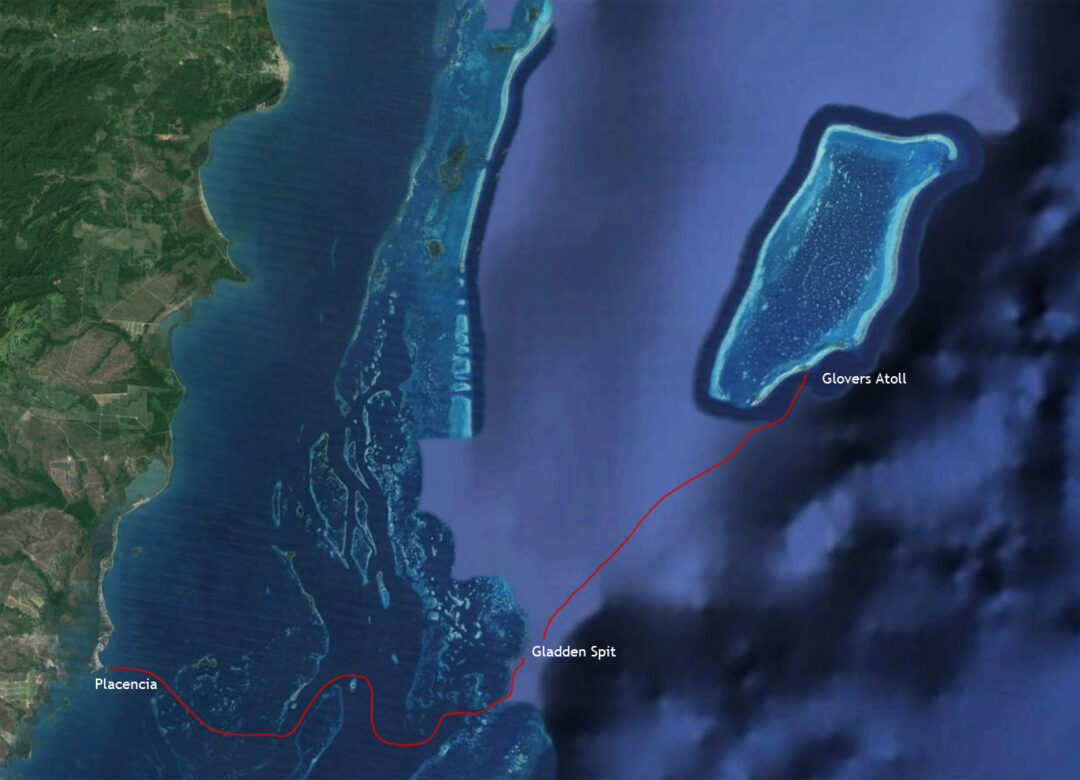
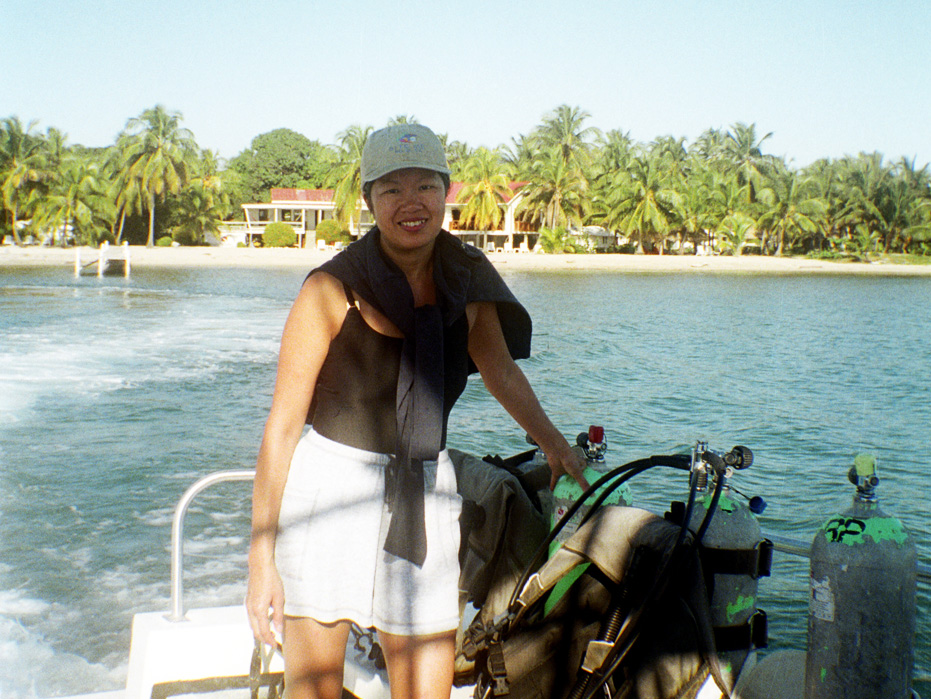
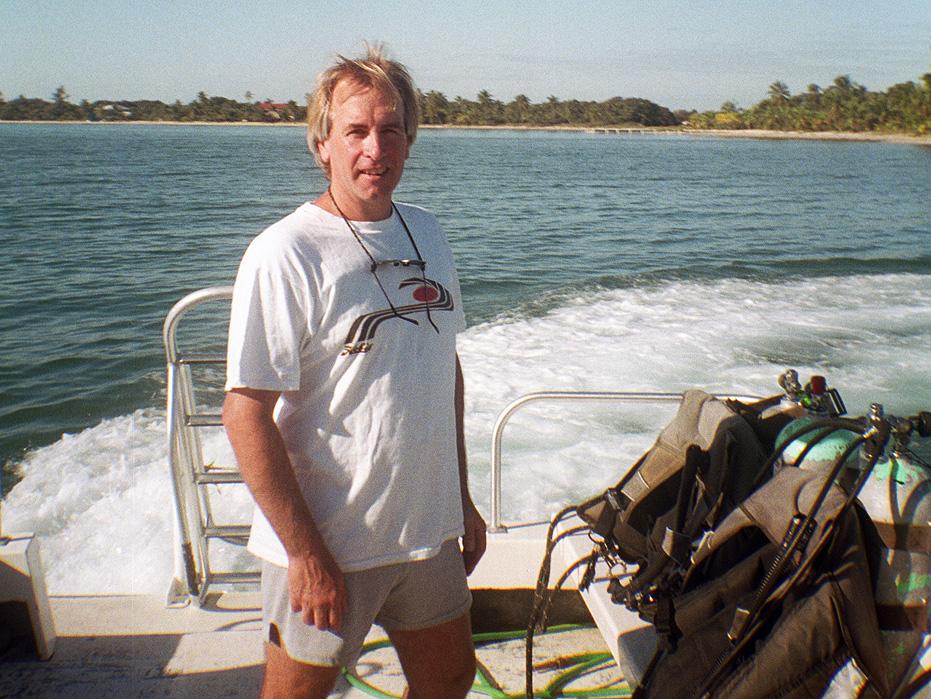
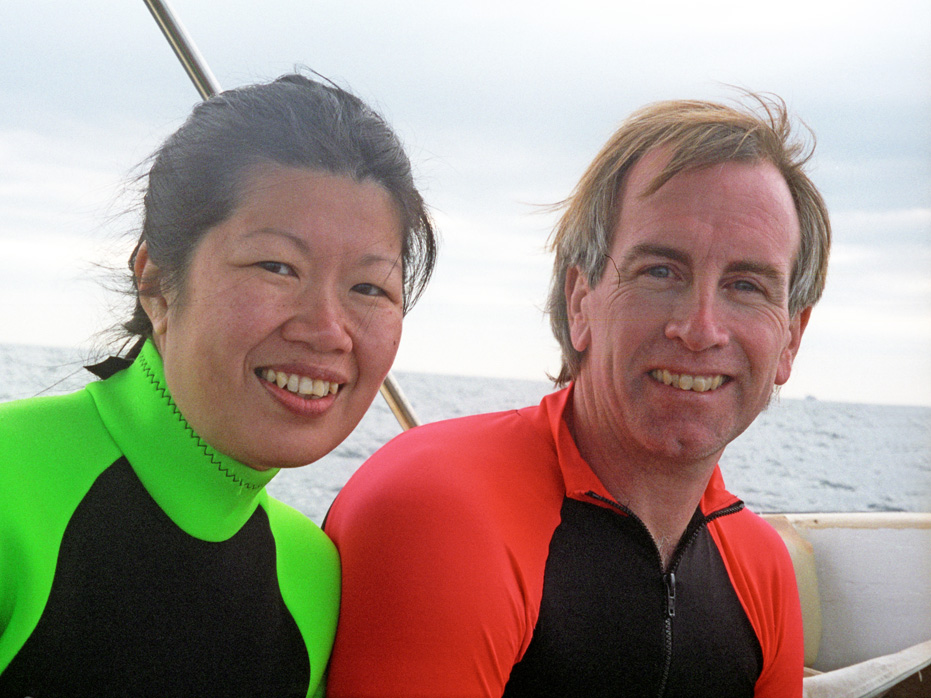
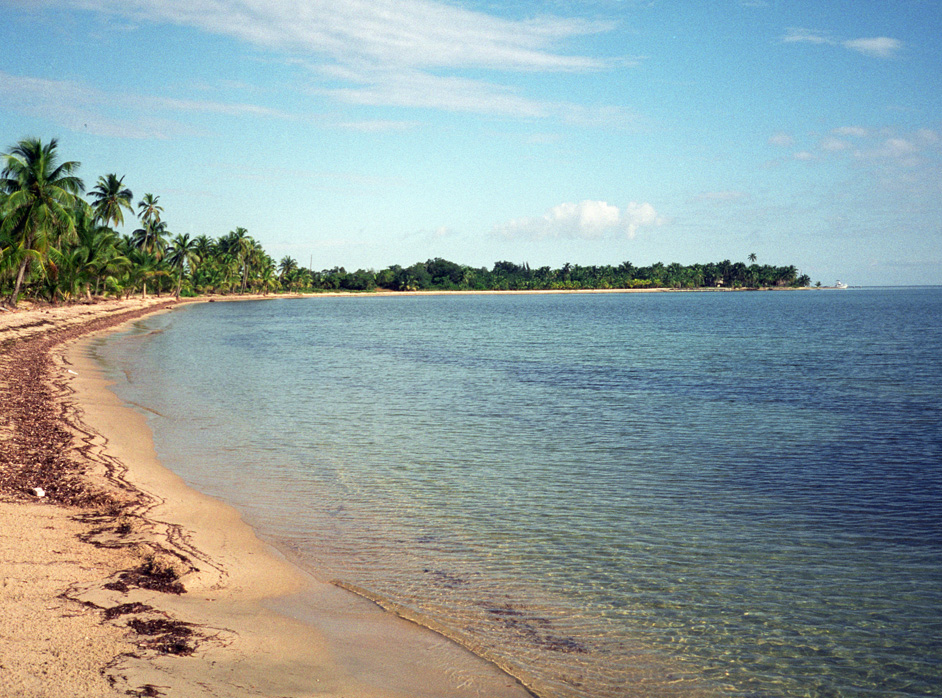
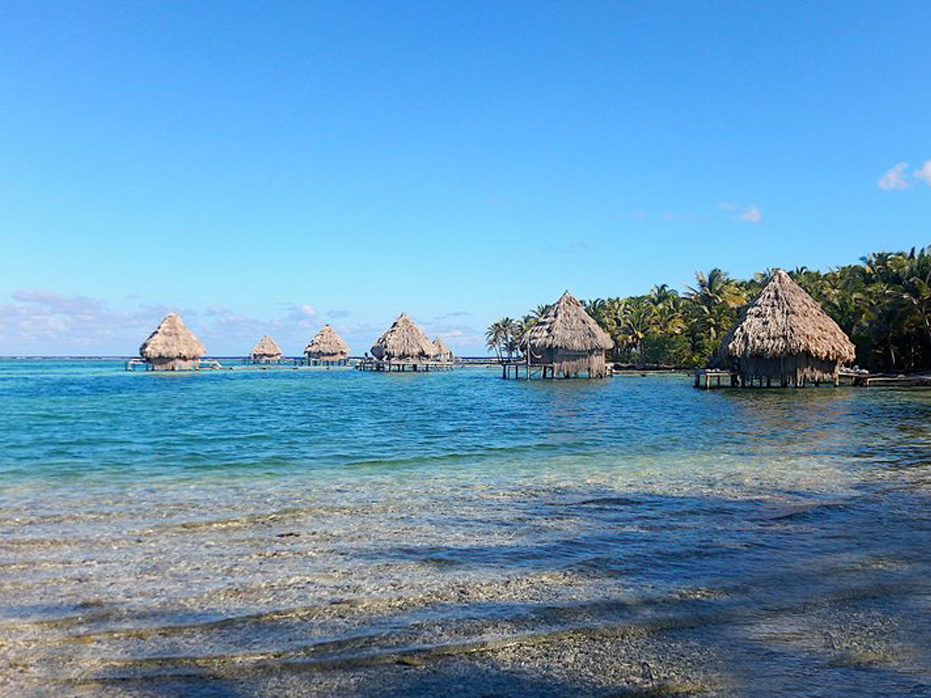
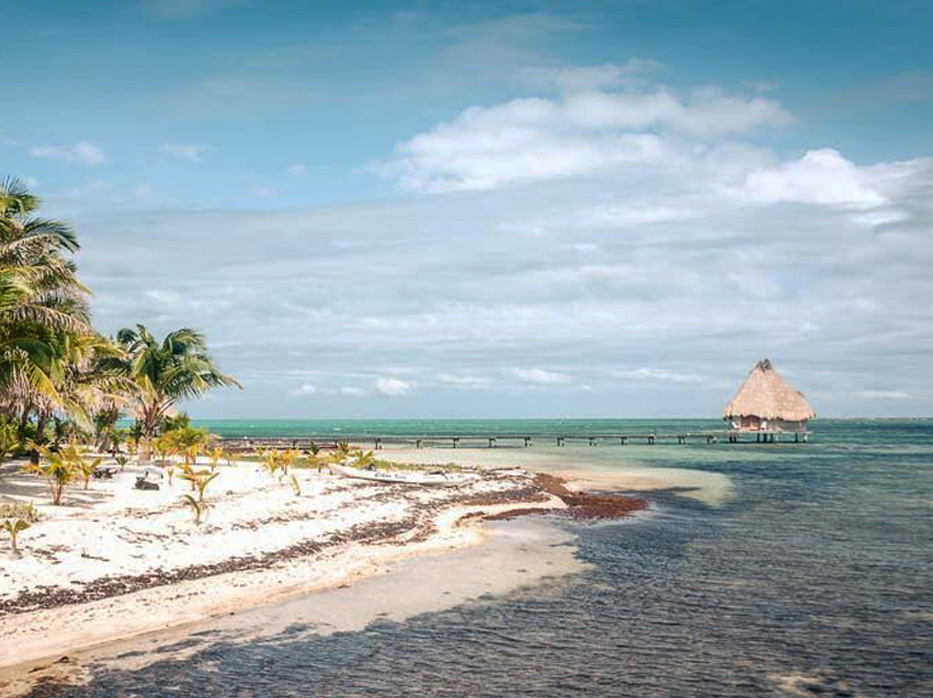
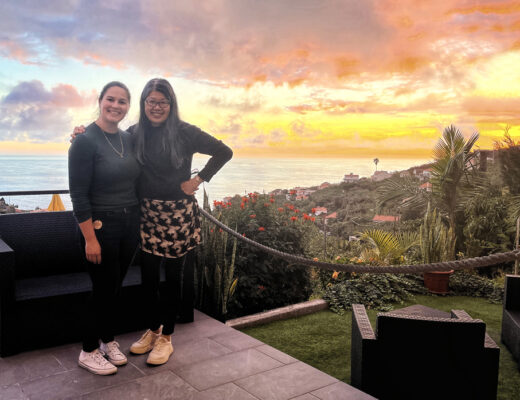
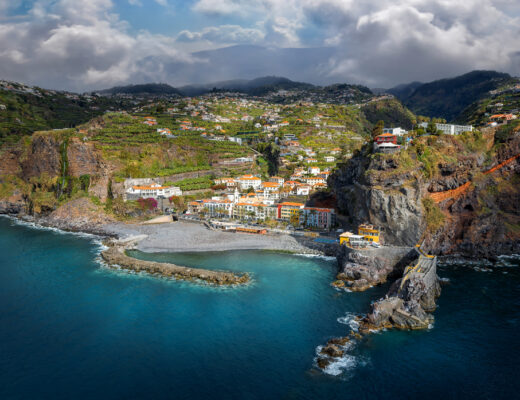
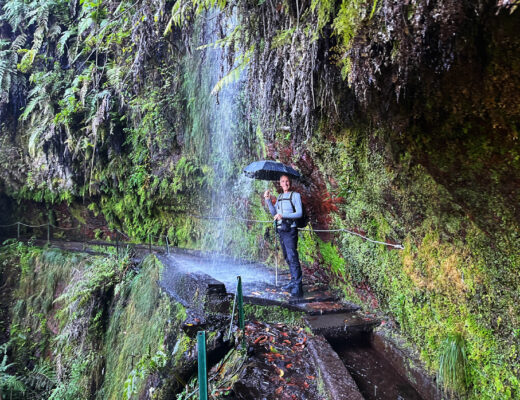
No Comments